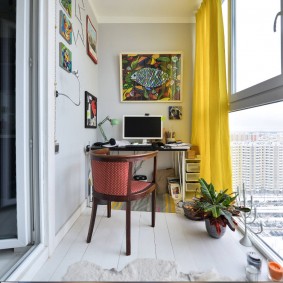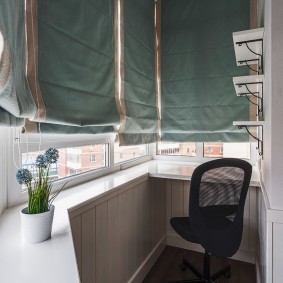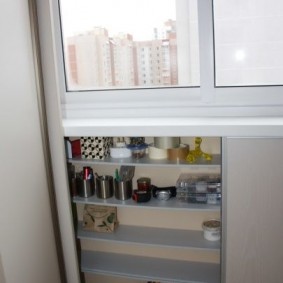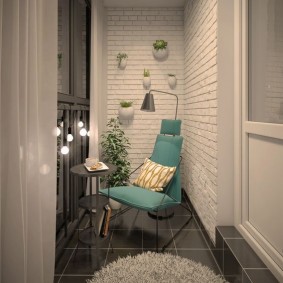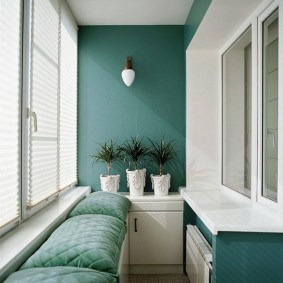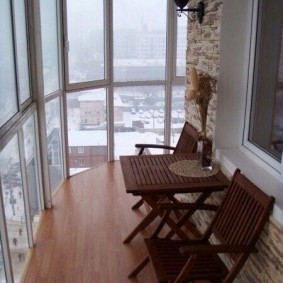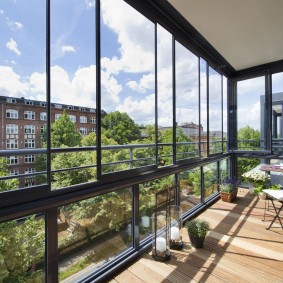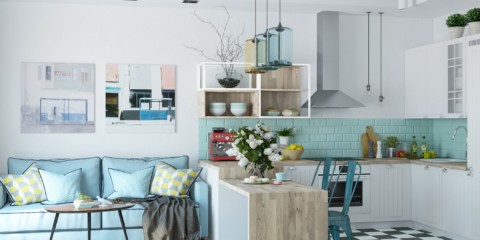 Interior
The use of neoclassical style in the interiors of real apartments
Interior
The use of neoclassical style in the interiors of real apartments
Most modern apartments have one or more balconies. With a competent and thoughtful approach to the arrangement, the loggia can be turned into a comfortable place to relax, a small office or just expand the surrounding space. Glazing the balcony will allow you to comfortably use it in any weather, as well as protect the home from rain, street noise and dust.

Glazing the balcony will add a few square meters of usable area, which can be used at your discretion
Important points in the glazing of a balcony or loggia
Content
Before deciding on the need for glazing the loggia, you should find out all the features of the procedure: how to glaze the balcony so that the work was done efficiently and at a reasonable cost.

First of all, you need to decide whether the balcony will be insulated or if you want simple glazing
Depending on the type of glazing, various profile materials are used: wood, plastic or metal. You should also determine which double-glazed windows will be used. The higher their quality, the more expensive they will cost.
When selecting material and double-glazed windows, it is recommended to take into account their characteristics. For example, when installing insulating glass units, it will not be practical to use an aluminum profile.
To determine the approximate area of glazing, you need to know the width and length of the balcony, as well as the height from the side of the loggia to the top. The price and volume of work will depend on the results obtained. For glazing, it is best to contact specialists who have positive feedback and long experience. A large number of photos of glazed balconies can be found on the network and choose the option to your liking.

The glazed balcony not only looks neat, but also has protection against all weather conditions.
Types of wings for the design of a balcony or loggia
Depending on the planned design of the loggia and its functions, it is necessary to choose the best option for the sash. For active sashes, swing and sliding mechanisms that are suitable for any of the profile materials are most often used. Swing-swing systems are also popular, which have an optimal cost and are suitable for balconies of various sizes.

If necessary, the sash opening systems can be combined, for example, the end of the balcony can be closed with an oar structure, and the front part with a sliding system
Swing wings
Their mechanism consists of a handle and a loop, thanks to which the window can open inward or outward (depending on the type of hardware). Such flaps swing open in the horizontal plane. As a modern addition, shtulp can be used, which allows not to install a stationary vertical impost on adjacent sashes.

Swing wings can be made in the usual rotary version or with a rotary-folding mechanism
Hinged sashes are often supplemented with such a detail as “scissors”, which, when the handle is turned upward, deflect the sash at a certain angle in the vertical plane.The combination of these devices is called a swing-out mechanism and is used for glazing most modern windows.

A solution with a window in the upper part of the sash is also possible.
The swing mechanism in glazed balconies has the following advantages:
- affordable cost;
- the possibility of airing without fully opening the windows;
- free access to the back side of double-glazed windows;
- the possibility of alternating active and “deaf” sashes.
For swing structures, a wide variety of accessories is used, which does not require special care.
Sliding sash
The sliding windows mechanism is based on guides and carriages with rollers moving in grooves. The flaps easily slide parallel to each other in the frontal plane.
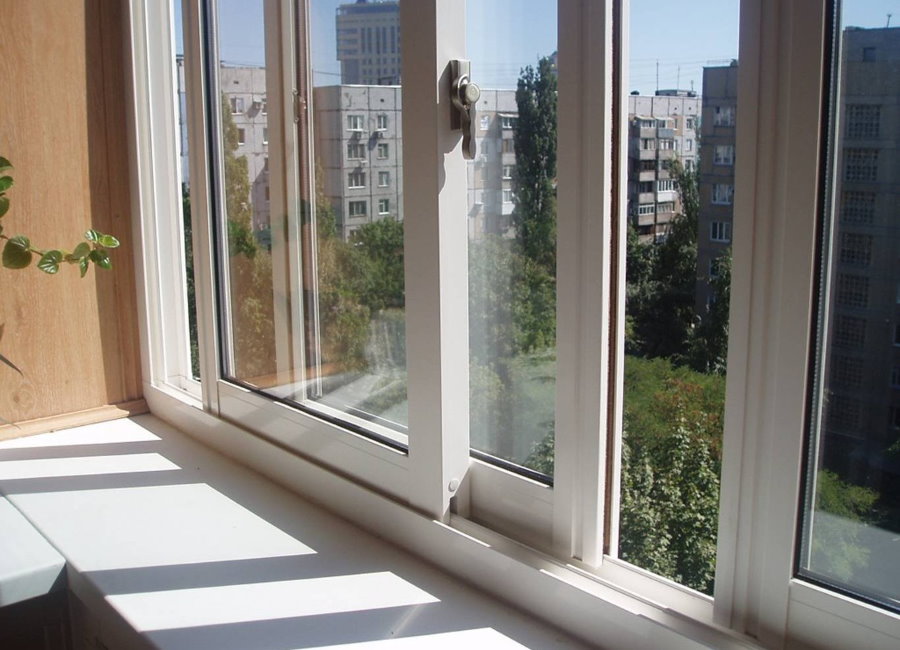
Sliding sashes are both plastic and aluminum
Among the advantages distinguish:
- save space and enable use on narrow balconies;
- provide convenient airing;
- have a stylish appearance.
While giving preference to sliding windows, it is necessary to take into account the possibility of access to the back of the wings. Sometimes this will require additional steps.
Sliding mechanisms are perfectly combined with metal and aluminum structures, and are also suitable for warm glazing.

Sliding glazing saves space and looks solid
Types of glazing of a balcony and a loggia
When choosing the type of glazing of a balcony, it is important to consider such a factor as the need to maintain heat in the room or its absence. There is cold and warm glazing, each of which has its own characteristics and advantages.

The cost of the upcoming work largely depends on the type of glazing chosen.
The nuances of cold glazing
When using this type, it is not required to purchase insulation and other expensive materials. The aluminum profile and the simplest double-glazed window are perfect for cold glazing. This option is used in old buildings, as it has light weight and does not exert a load on the stove.

Cold glazing is the most inexpensive option for landscaping a balcony

For cold glazing, aluminum sliding systems are most often used.
The nuances of warm glazing
A warm glazed loggia can be used at any time of the year, but the cost of the structure that is used with this option will be much higher. When performing warm glazing, high-quality multi-chamber double-glazed windows and materials for warming floors, ceilings and walls are used.

When choosing this method of glazing, you will get a warm and comfortable balcony on which you can organize an office, rest room or gym
Glazing materials
The balcony can be glazed in various ways: classic, in which the frame is installed on an existing parapet, or French, in which the parapet is dismantled and a window is installed from floor to ceiling. For the manufacture of profiles using various materials, which include wood, metal, plastic.

French glazing is a floor-to-ceiling window construction
PVC
The most popular glazing option, which has many advantages:
- No installation restrictions.
- Different degrees of thermal insulation and the number of glasses.
- The presence of insulation.
Polyvinyl chloride is resistant to environmental influences, provides an optimal level of tightness and does not require special care.

PVC window consists of frames and sashes made of a multi-chamber profile with steel elements reinforcement
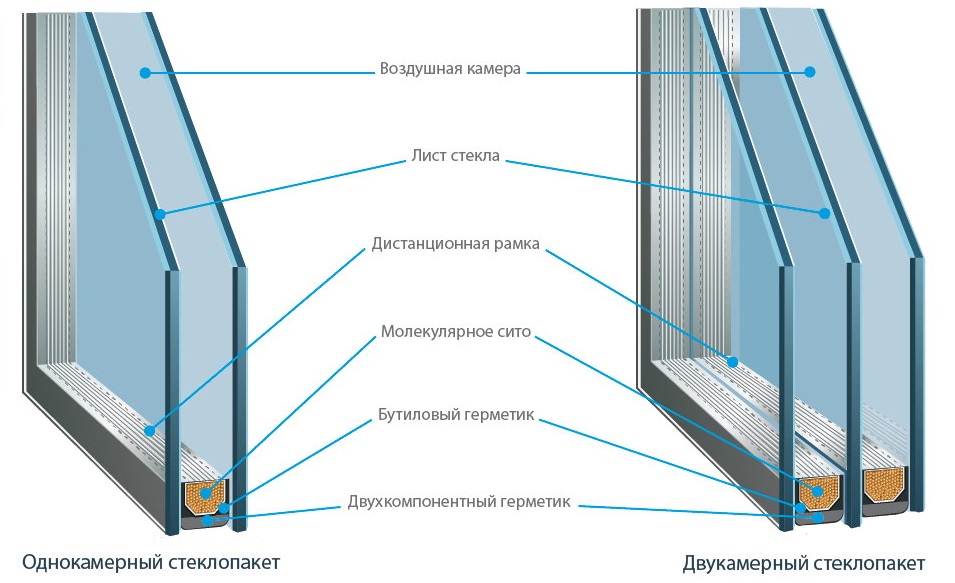
One or two-chamber double-glazed windows are installed in the frames and sashes, providing a certain level of thermal conductivity
Tree
The wooden profile is the most environmentally friendly material, which has high quality, good thermal insulation performance.With the help of modern technologies, wood is processed with special tools that increase its service life by several times.

The device of a modern wooden euro-window
The cost of a wooden profile is much higher than other materials used in glazing.
Aluminum
Commonly used in cold glazing systems. When warm, it is used together with a thermal bridge. Differs in ease, durability, and a high level of environmental friendliness. The cost of such a profile is several times higher than PVC.

The device is a “cold” aluminum window sliding type

The device is a "warm" aluminum swing type window
In addition to these materials, steel profiles or frameless glazing techniques are sometimes used, in which the glass is not inserted into the frame, but is fastened from the bottom and top to the profile.

With panoramic glazing, even a small balcony looks much more attractive
Finishing the balcony before glazing
Before glazing the balcony, it is necessary to carry out preparatory work on the decoration of its floor, walls and ceiling. Based on the desired type of glazing, it is possible to select materials that are optimal for work. In the old Khrushchevs, it is necessary to finish not only inside, but also outside.
Floor finish
Not only the aesthetic appearance of the loggia depends on the condition of the floor, but also the comfort of its operation. Depending on the functions that the balcony will carry, the material for the flooring is selected. Can be used:
- tree;
- laminate;
- linoleum;
- tile;
- PVC tile;
- carpet.
For warm glazing, you can use any of the proposed options, and for cold glazing, the best material will be plastic tiles, which are less exposed to negative environmental factors.

Linoleum - the most economical option for flooring for a glazed balcony

Ceramic tiles - the most durable option
Wall decoration
When decorating the walls, one should also rely on the size of the loggia and the preferred type of glazing. When warm, you can use the following materials for wall decoration:
- Paint and decorative plaster.
- Wooden lining, panel MDF or cork.
- Ceramic tile.
- Drywall, plastic panels.
- Stone or brick.
Wall decoration is an important step that will not only emphasize the interior design, but also protect the balcony from excessive moisture and dirt. With cold glazing, gypsum plasterboards, cork and plastic coatings have proven themselves well.
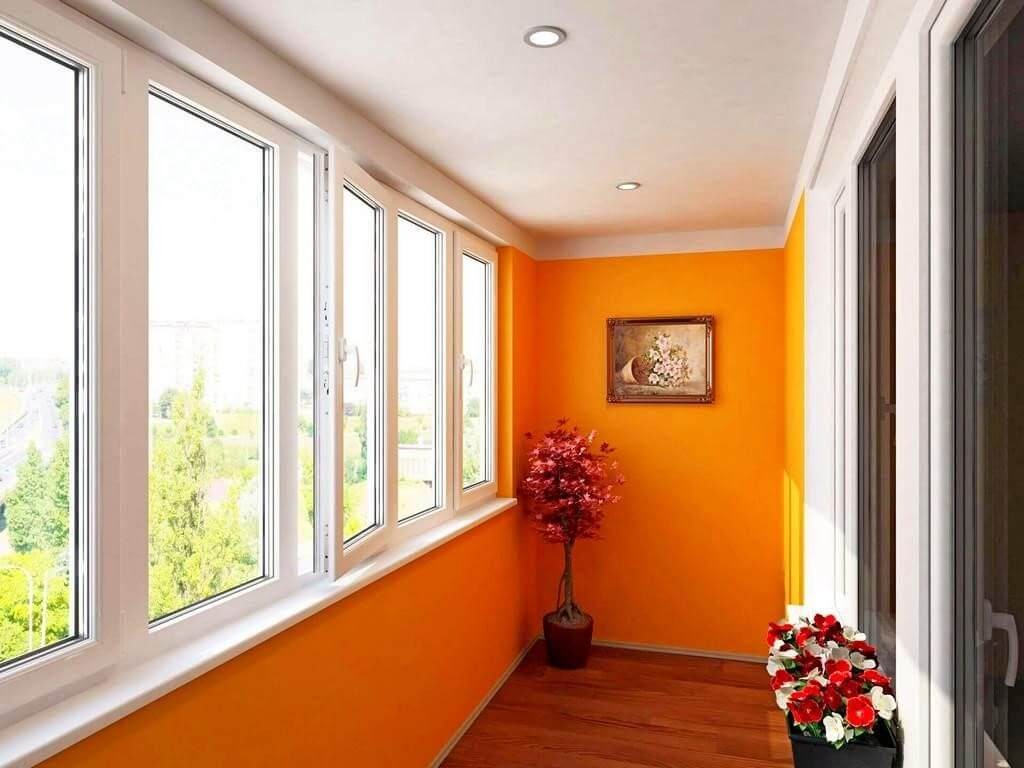
Wall decoration should be chosen based on the style of the interior of the balcony
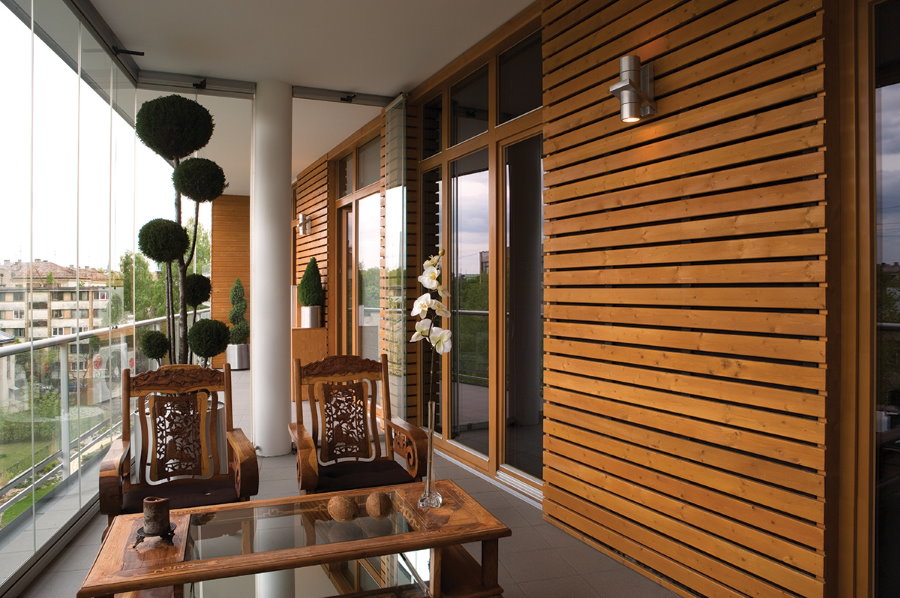
Stylish wood wall decoration on loggias with panoramic glazing
Ceiling decoration
Proper decoration of the ceiling will insulate the structure and protect it from blowing. It is carried out at the final stage of finishing work, after performing waterproofing, eliminating cracks and warming.
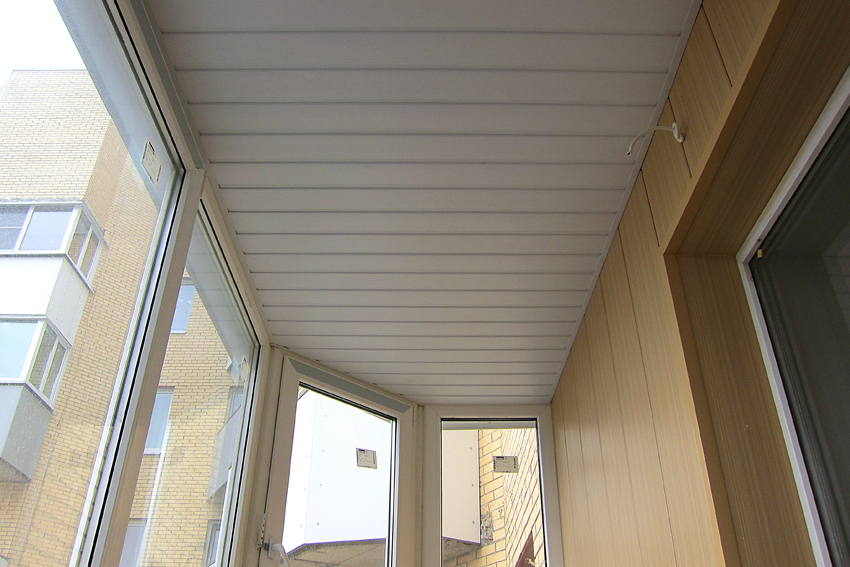
Finishing the ceiling of the balcony with a plastic lining

Stretch ceiling with integrated spotlights
For ceiling decoration, wooden and PVC panels, drywall sheets, metal rack structures are used. If desired, you can use a stretch ceiling or just paint it with paint.
When choosing the coating material for the ceiling, remember that it should not impede the opening of the wings.
A fully finished and glazed balcony will decorate any home, make it more cozy and comfortable. There are many photos with examples of glazing loggias, which will allow everyone to choose the best option for themselves.
Video: Balcony Glazing Errors
